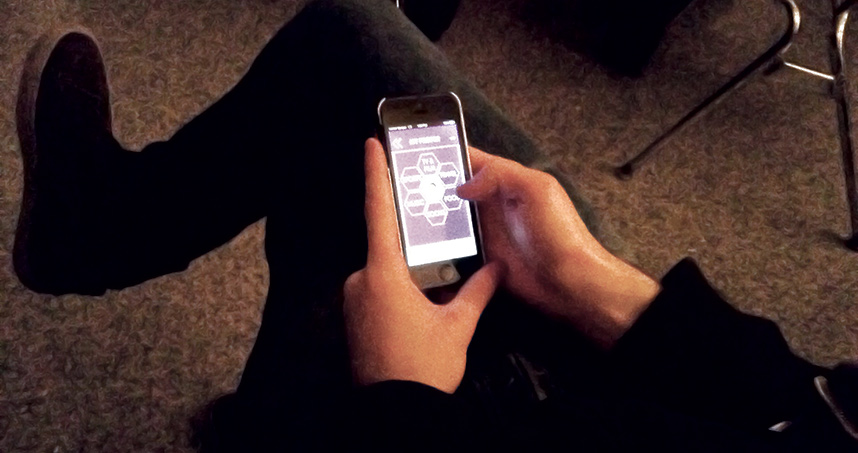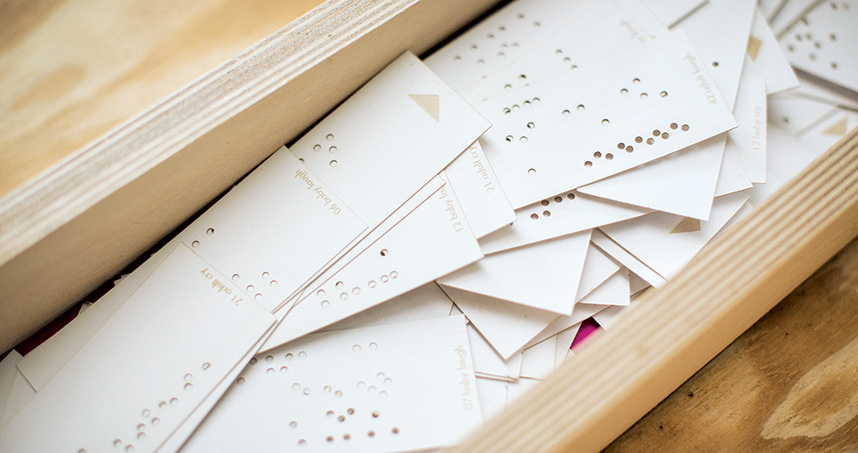Blurring The Boundaries of Art and Engineering
Two McCormick-based courses facilitate collaboration among artists and engineers
In the late hours of Friday, December 28, 2007, a Wikipedia editor named Unnatural Gas sliced through the site’s page on global warming, dragging his electronic red pen through the page’s “weasel words.” Mere seconds later, another editor named Brusegadi reinstated the deleted words. “Not weasel words,” he typed. “They are from sources.”
Seven years later, Northwestern’s Steph Shapiro, a senior studying design and sociology, and her team sorted through that same page’s extensive history of past edits, noting the back and forth debates over even the smallest details. “Wikipedia editors aren’t researchers,” she says. “So they have their own influences that cause them to change the information. There are many behind-the-scenes debates as editors work toward consensus.”
![Successive edits on Wikipedia pages serve as the inspiration for and substance of [View history].](../images/spring-2015/wikipedia.jpg) The successive edits served as the inspiration for and substance of an art installation called [View history] that visually reveals the evolution of Wikipedia’s hotly contested global warming entry. The installation is one of four final course projects that emerged from Data as Art, a fall-term offering co-taught by faculty from Northwestern University and the School of the Art Institute of Chicago (SAIC).
The successive edits served as the inspiration for and substance of an art installation called [View history] that visually reveals the evolution of Wikipedia’s hotly contested global warming entry. The installation is one of four final course projects that emerged from Data as Art, a fall-term offering co-taught by faculty from Northwestern University and the School of the Art Institute of Chicago (SAIC).
Another similarly interdisciplinary course, Artists and Engineers Collaborate, is offered in partnership with the Weinberg College of Arts and Sciences, and provides new opportunities for art and engineering students to enhance the way they see, perceive, and interact with the world.
Both courses are part of a series of initiatives designed to bridge the boundaries of art and engineering, to break down the expectations of conventional thinking, and to help students look at problems in new ways. The Barry and Mary Ann MacLean Fund for Arts & Engineering supports both courses.
BIG, BEAUTIFUL DATA
Now in its second year, Data as Art challenges students from both Northwestern and SAIC to work together to translate complicated data sets into visual art or images that an average viewer can understand. Each interdisciplinary team included students from the McCormick School of Engineering and Applied Science, which organized the collaboration through the Segal Design Institute. The final projects went on public display in December at the SAIC’s LeRoy Neiman Center in downtown Chicago and later moved to the Ford Motor Company Engineering Design Center on Northwestern’s Evanston campus.
The [View history] team spent 28 hours printing the past Wikipedia entries about global warming onto sheets of Plexiglas.® The sheets were then arranged with the newest entry in front and the oldest in the rear. A viewer standing in front of the stack can literally see through the progression of edits, back to pages that have long since been deleted from public view. Books placed beside the Plexiglas structure share comments and conversations from the site’s editors.
“It’s like you’re looking back in time,” said Julia Torres, a second year student in the Master of Fine Arts program at the SAIC and part of the [View history] team. “Wikipedia strives to be neutral, but what is the relationship between neutrality and truth? It’s interesting to see how that works out in a collaborative document.”
SOLVING MEANINGFUL PROBLEMS
After Data as Art wrapped up its second successful year, the second boundary-blurring course, Artists and Engineers Collaborate, was offered for the first time. The new offering limited interdisci-plinary collaborations to students at Northwestern. Co-taught by McCormick’s Malcolm MacIver and Weinberg’s Jeanne Dunning, students from art and engineering converged on projects and learned from one another’s cognitive styles.
“Engineers at McCormick are trained for problem solving. They are given a problem by a client, and they solve it. Artists are taught to find a problem, so the artist’s problems are often interior in source, while the engineer’s are often exterior.”
-Malcolm MacIver
Engineers at McCormick are trained for problem solving," MacIver says. "They are given a problem by a client, and they solve it. Artists are taught to find a problem, so the artist's problems are often interior in source, while the engineer's are often exterior."
Graduate student Laura McGinn enrolled in Artists and Engineers Collaborate because she liked the idea of working with people from different academic backgrounds. Ironically, her project took a more personal turn when MacIver and Dunning challenged her and her classmates to complete social practice art projects, a type of art that combines practicality and usefulness with aesthetics for the purpose of social engagement.
McGinn chose this as an opportunity to solve a meaningful problem that hit very close to home. Having grown up with a brother who stands at the high-functioning end of the autism spectrum, she knows how frustrating communication can be.
“You want to communicate,” says McGinn, who studies art theory and practice. “But it’s tricky to bridge that gap.”
Inspired by her brother, McGinn and her team initially planned to develop a board game to help autistic individuals improve their communication skills. The team quickly shifted focus after discovering that many such games already existed in the marketplace.
They did find, however, that nothing existed to help the non-autistic learn how to facilitate interactions with their autistic colleagues in the workplace. Through interviews and research, the team discovered that a lack of education among employers and co-workers created a difficult environment for autistic individuals to succeed, leading to an unusually high rate of unemployment among them.
The team’s ability to change its plan based on their research impressed Dunning and MacIver. “You can’t solve a problem based on preconceived notions,” Dunning says. “When they really dug into their project, their opinions changed based on what the research revealed.” The result of that work was Spectrum, a collaborative game in which participants place cards on the playing board in a pre-set pattern. Working together with restricted communication, non-autistic players gain a basic understanding of some of the communication challenges those with autism face in traditional work environments.
Have Dreams, a Chicago-area autism resource, has expressed interest in implementing Spectrum in its program. The development team is also building a website where potential users can download the game and print playing cards.
WHOLE-BRAIN LEARNING
Although the students in both courses—Data as Art and Artists and Engineers Collaborate—came from different disciplines and used different vocabularies to express themselves, they were not encumbered by stereotypical divisions when working together. In fact, as they came to appreciate and learn from one another’s divergent talents and cognitive styles, they changed the way they thought about their own work and goals.
“It was interesting to see how people just naturally wanted to try different roles,” says McGinn. “The art students tried to be more pragmatic; the engineers wanted to be more poetic. The experience offered a place to experiment outside of our usual mode of thinking.”
“I usually think about presenting my work for the scientific community,” says Vijay Murganoor, a graduate student in computer science who participated in Data as Art. “I’ve now started thinking in more aesthetic terms and not just in numbers. This class has shown me a way to present my work that can reach many more people.”
“These courses are difficult and costly to deliver. They require many faculty members and do not scale well, but they offer a tremendous experience for our students and, more and more, are a part of who we are. The output justifies the effort. Students learn that other disciplines share much in common. These initiatives provide the opportunity for our students to learn to work at the intersection.”
-Dean Julio M. Ottino
Artists and engineers collaborate
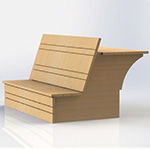
Bable
The Northwestern campus boasts miles of beautiful lakefront, but few students actually use it as a place to study. Bable is a bench/table hybrid that allows students to work outside at a desk while providing shade and a sense of personal space. A prototype will be installed on the Norris University Center lawn this summer.
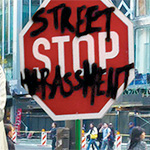
SPEAK UP!
Street harassment is a pervasive problem in many cities worldwide. One team recognized the influence of bystanders in these situations and aimed to empower them to intervene. Speak Up!, a public installation in downtown Chicago, promoted awareness of street harassment and offered phrases that witnesses could verbalize to intervene.
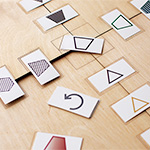
SPECTRUM
Spectrum is a collaborative, pattern-matching game that helps non-autistic workers facilitate social and pro- fessional interactions with autistic colleagues. By asking players to perform tasks with limited communication, the game enables neurotypical individuals to better understand some of the communication challenges encountered by those with autism in traditional work environments and to start to reflect on how they communicate.

SHUTTLETALK
Students in the class found that commuting often leads to a void of productivity. So they created ShuttleTalk, a smartphone app that facilitates social interaction among riders on the Northwestern intercampus shuttle. The app connects riders with others on the shuttle who are open to meeting new people, sharing stories, and networking.
Data as Art
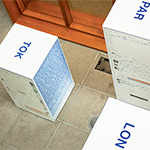
WIKITROPOLIS
The Wikitropolis group investigated the link-system architecture of Wikipedia by examining the entries about five cities: Chicago, London, New York, Paris, and Tokyo. Each city was represented by its own three-dimensional, skyline-like pillar, which was papered with links from its Wikipedia page. The links darkest in color were unique to one particular city while lighter links represented more common features.
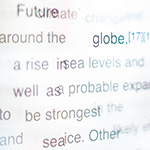
[VIEW HISTORY]
[View history] visually demonstrates the evolution of content on Wikipedia’s “Global Warming” page to illustrate the chronological development of the article, the information that has been deleted, and the debates among the individuals who have edited the article. The installation invites people to examine the significance and power of editing a collaborative document and to question the information sources that influence public opinions on scientific topics, especially in light of climate change denial.
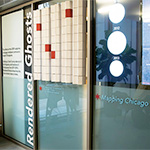
RENDERED GHOSTS
Working with Chicago housing data, the Rendered Ghosts team created an installation showing the recent history and ongoing social and political effects of the foreclosure crisis. An interactive monitor displayed the frequency and location of foreclosures in Cook County, including an in-depth look at the Portage Park neighborhood, which has one of the highest foreclosure rates in the city. The project also included a town of 3D printed houses painted in different colors to represent foreclosure statistics.
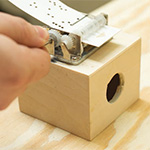
UN*SPOKEN
An interactive installation called Un*spoken explored the similarities and differences between laughter and crying. The team translated a database of sounds into music, which was then printed in dot compositions on strips of paper to be played through a hand-crank music box. While it was hard to distinguish the differences between laughing and crying—two very different yet parallel emotional responses— the team found that baby sounds were more complicated than adult sounds.

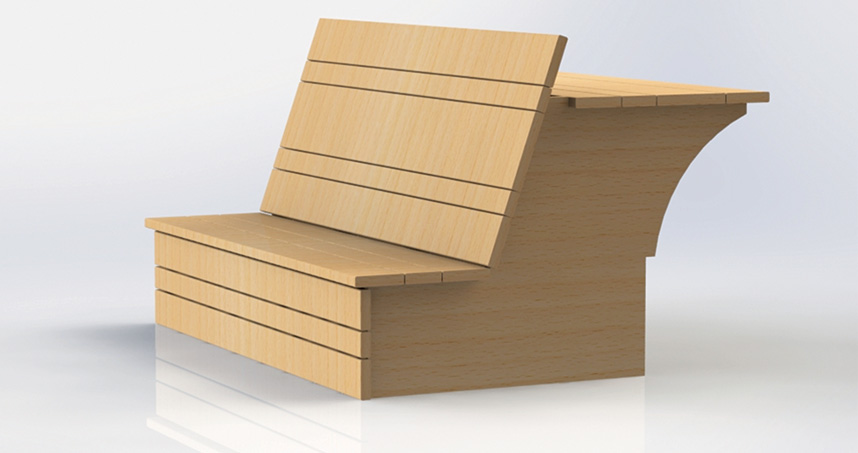



![[View History] visually demonstrates the evolution of content on Wikipedia's "Global Warming" page.](../images/spring-2015/view-history.jpg)

